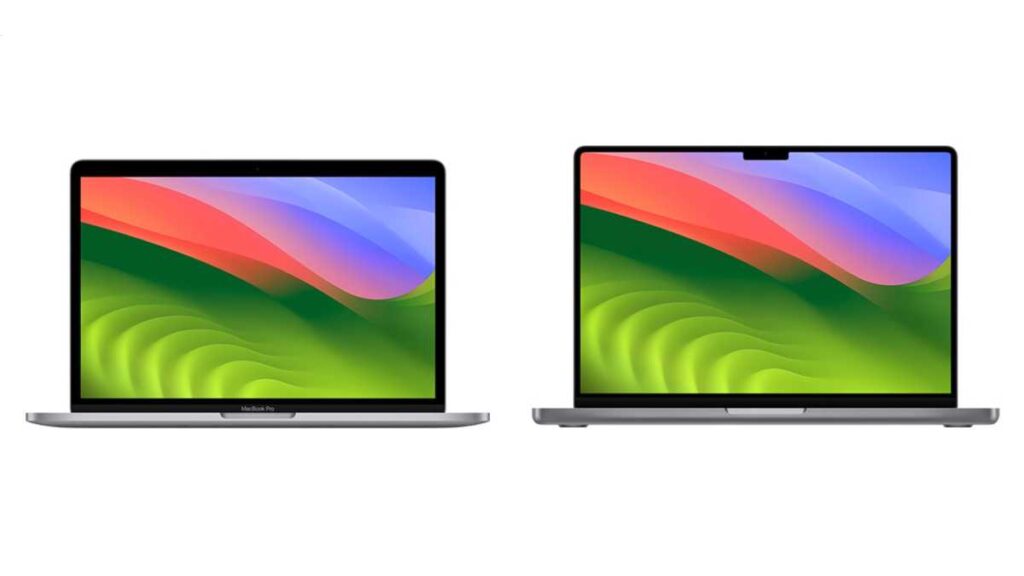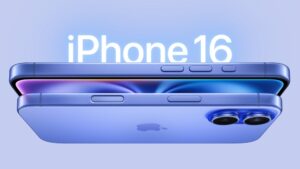A few ‘Fast’ facts Apple didn’t want to tell us during this week’s Mac event

Apple’s goal with its product events is manifold: it wants to introduce new devices to its customers on its own terms, while simultaneously putting a stake in the ground to both fire shots at its competitors and signal to investors that it’s continuing to come out with products that are in line with the Apple brand.
The Scary Fast event held on Monday night to introduce its new M3-based Macs was unusually short and to the point for Apple, whose iPhone and WWDC videos usually run an hour or more. There were just a few announcements of new Macs: 14-inch and 16-inch MacBook Pros in a variety of flavors, as well as a slightly revamped iMac using the new processor.
While the event itself might have seemed largely pro forma, it wasn’t without some significant details—even if you did have to root around a bit to find them.
Going Pro
For the first time, Apple launched a new generation of its own chips with three separate versions: the M3, the M3 Pro, and the M3 Max. Previously, the company has taken more of a gradual approach, rolling out the base-level processor first, followed some months later by the more powerful models. Launching all three at once (with, presumably, an M3 Ultra to come later) speaks of not only the company’s confidence in these particular chips but also of its silicon strategy overall.
Apple also seems to be getting a better sense of how to position its chip lineup. While both the M3 and the M3 Max are largely consistent follow-ons to their predecessors, the M3 Pro has some noticeable differences: unlike the M2 Pro, which featured a 12-core model with 8 performance cores and 4 efficiency cores, the 12-core M3 Pro splits it down the middle, with 6 performance cores and 6 efficiency cores. It also features slightly lower memory bandwidth than its predecessor: 150GBps versus 200GBps.
Why the changes? I’d wager it boils down to a couple of alliterative factors: performance and price. Fewer performance cores mean that it’s obviously unlikely to hit the same speeds as a machine with more—though the M3 does show modest speed gains over the M2, which may help compensate. That reined-in performance helps Apple position the M3 Pro better in between the standard M3 and the high-powered Max. And no doubt the fewer performance cores and lower memory bandwidth make the production of the chip cheaper, which helps fit it into a specific price bracket.
Lowering the bar
Speaking of price, let’s talk about the 14-inch MacBook Pro. Apple lowered the introductory price of its smaller pro laptop to $1,599; previously it started at $1,999. As such, it splits the difference between that and the old 13-inch MacBook Pro, which came in at $1,299.
Apple’s trying to thread the needle here, eliminating an older product (the 13-inch MacBook Pro, which still sported the kicked-to-the-curb Touch Bar) and convincing customers to shift to a more modern model, even if it is at a higher cost.
The 13-inch M2 MacBook Pro (left) is being replaced by the 14-inch M3 MacBook Pro, but the new model lacks a few features found in the M3 Pro and Max versions.
Apple
But it’s worth noting that there are a few key differences between the new 14-inch MacBook Pro and the 13-inch it replaces: for one, the previous entry-level 14-inch model shipped with the more powerful M2 Pro, whereas this model uses the vanilla M3. There’s no doubt that the M3 is a capable chip, and will be more than sufficient for those who bought the 13-inch MacBook Pro, but whether the price-to-performance ratio is something that those customers will swallow is the real question. The previous 14-inch MacBook Pro (and the new higher-end 14-inch MacBook Pros) also came with three Thunderbolt 4 ports; the new base-model 14-inch has just two ports, and it uses an older version of Thunderbolt which, among other limitations, can drive just one external display.
True to the event’s spooky theme, the base-level 14-inch MacBook Pro is a Frankensteinian combination: essentially an updated version of the 13-inch MacBook Pro popped into the chassis of the 14-inch model, at a price smack dab between the two.
Prime-time cut
One other significant thing to take away from this event? The event itself. Apple marketing is a finely tuned machine, and by this point, we know exactly what to expect from the slickly produced videos it’s been making since 2020.
But that doesn’t mean the company doesn’t need to stay sharp. A primetime event the night before Halloween—with a seasonal theme and short running time—is a great opportunity to try out things that Apple wouldn’t usually do. More to the point, the stakes for an event focused on the Mac are relatively low—there’s a reason, by comparison, that Apple didn’t change up its annual iPhone event—so if it doesn’t pan out, it can just chalk it up to a failed experiment and move on.
Apple also tried something different behind the scenes this time around; eagle-eyed viewers caught the note at the end of the event that it was shot entirely on the iPhone 15 Pro Max (albeit with plenty of professional equipment). If nothing else, the company can crow about the prowess of its smartphones and point out that it doesn’t just talk the talk, but walks the walk.
CPUs and Processors, MacBook




